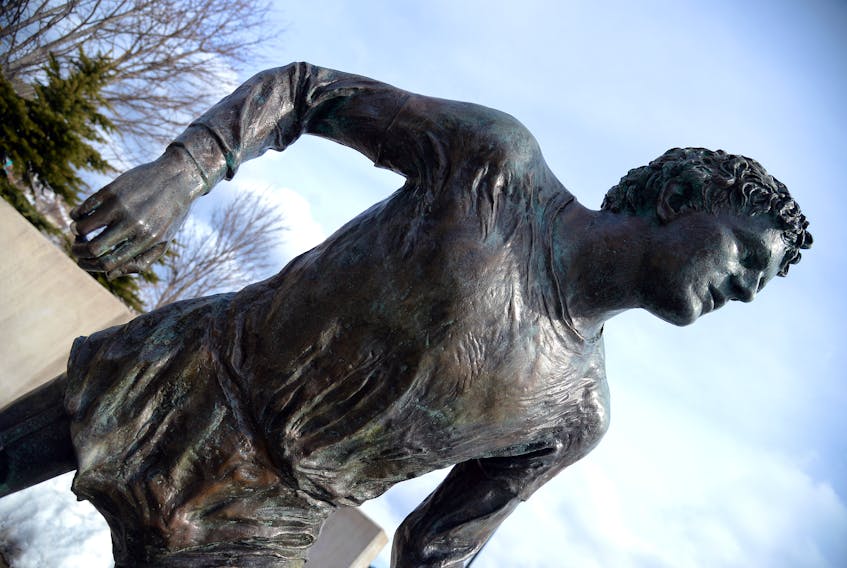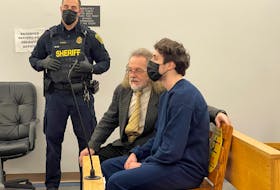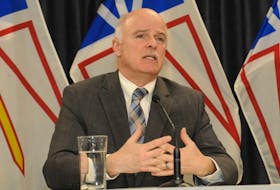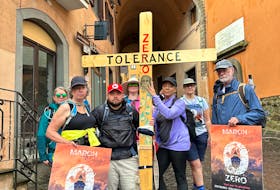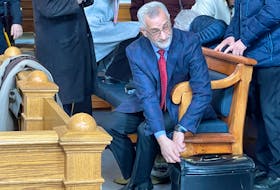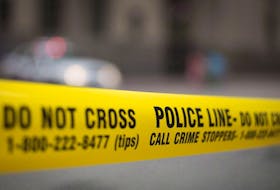ST. JOHN'S, N.L. — Task anyone to put together a list of the Top 10 Canadians of all time, and chances are Terry Fox will make the cut.
"He's iconic in our country," said Donna Ball, who met Fox on two occasions in St. John's. "Many refer to him as Canada's greatest hero for many reasons — even people who have never had cancer. It's more about hope and encouragement and inspiration and being the best that you can be and doing everything to the best of your ability. … That's his legacy."
The Port Coquitlam, B.C., native's Marathon of Hope in 1980 captivated people across the country and brought a newfound visibility to cancer. His goal was to raise funds and awareness for cancer research by running across Canada with an artificial leg — his right leg was amputated in 1977 after he was diagnosed with bone cancer. It's been 40 years since he started that trek on April 12, 1980, and though he ultimately had to cut his run short in Thunder Bay, Ont., after it was determined the cancer had spread to his lungs, the repercussions of what Fox did to shine a spotlight on the disease are still being felt to this day.
Lasting legacy

Hundreds of millions of dollars for cancer research have been raised in Fox's name since his death in 1981 at the age of 22, with most of that money coming from annual runs held in communities across Canada. Children still learn about Fox and take part in their own school-based runs. Last Halloween, seven-year-old Ethan Smallwood of Clarke's Beach dressed up as Fox and raised $23,000 for the Terry Fox Foundation.
Newfoundland and Labrador's connection to Fox's legacy is firmly cemented in history, as it was in St. John's that his journey began. A bronze sculpture of Fox located at a memorial park at the east end of Water Street honours Mile Zero of that journey. Oddly enough, it was half-expected he would skip the province altogether.
"We had five days’ notice that he was coming," recalled Rev. Bill Strong, who was then working as the provincial field supervisor for the Canadian Cancer Society, the charity Fox was supporting with his run. "Originally, the plan was the Cancer Society thought he would start from Halifax. Terry held out and said, 'No,' he wanted to come to Newfoundland."
Ball speculates the decision to start in St. John's was partially informed by a fondness he already had for the city and province. An excellent athlete, Fox first came to the city in 1978 for what was then called the Canadian Games for the Physically Disabled. Ball was working her first summer job for the games at a registration desk when Team British Columbia arrived. Fox was competing in wheelchair basketball.
"We just had a fun interaction while we were doing the registration process," Ball recalled, adding he had a great sense of humour and a beautiful smile, and was down to earth. "I can't remember to this day all the things we talked about, but I was trying to welcome them to Newfoundland, like a Newfoundlander would do. They were just having a lot of fun."
Getting ready

Strong was grateful to spend time with Fox before he started the historic run, showing him around St. John's and even having him over for a meal. Strong's mother hemmed some of Fox's athletic wear during the visit.
Meanwhile, Ball caught wind of Fox's arrival in the city when her mom mentioned an article in The Evening Telegram about his Marathon of Hope. After the games in 1978, Ball corresponded with a couple of the athletes by mail, including Fox. Though she was not up to speed on his plans for the Marathon of Hope, Ball did know through the letters he had been training hard on running.
"He doesn't in those letters mention that he's planning to run across Canada. It was very, very early in his thinking, but he was training to run long distance. … He says that he's running seven days in a nine-day cycle and adding a half-mile every nine days. You can tell he's got a regime he's using."
Fox spoke, too, in the letters of being prone to injury since he was working with a fairly rudimentary prosthesis. He was lifting weights and pushing his wheelchair up a mountain to increase his body strength.
In his letters, Fox also alluded to some of the goals that ultimately inspired his Marathon of Hope.
"He talks about wanting to help people and wanting to inspire people," Ball said.
After learning he was back in the city, Ball reconnected with Fox at the Holiday Inn, where he was staying with his friend, Doug Alward, who accompanied Fox in a camper van. She was also at city hall the next day to see him start the Marathon of Hope.
Connecting with people
According to Strong, the fanfare for Fox in Newfoundland really picked up as he went further west. There was a great reception for him in Stephenville, where he ran along the main street and received support from onlookers, as well as in St. George's and Port aux Basques. A total of $30,000 was raised during Fox's run across the island. He reached Port aux Basques on May 6.
"I remember there was a speech in St. George's," recalled Strong, who by this point was accompanying Fox and Alward. "I remarked to Doug that he's either going to do this or he's going to die trying. Sadly, that's the way it turned out.”
By then, Fox had a routine in place where he would run for 12 miles and then rest for a couple of hours, and then continue. Typically, he would look to finish running for the day by two or three o'clock in the afternoon.
"He had a number of issues with the stump on his leg where sometimes that didn't always shift right, and it would cause some pain and it bled from time to time, but he adjusted and dealt with that as best he could," said Strong.
Goal-oriented
Strong was amazed to see first-hand how focused and determined Fox was when it came to working toward goals, admitting people within the Canadian Cancer Society at the time did not fully grasp what the young man was accomplishing until his Marathon of Hope moved further along. Today, it's a bit easier to fully comprehend what he did.

"If it was today, Terry would have been cured from the money that his run has produced," Strong said. "That's a marvellous thing, but the bigger thing was that how many other people have been cured from various cancers that the Terry Fox Run has funded (research for) over the years. … It's a great story about determination and a great story of hope."
For Ball, who went on to take part in many Terry Fox Runs with her family, Fox's legacy stands out.
"He was not doing this for himself," she said. "He was true to that message the entire time. He didn't waver from that. We knew nothing else, except he was doing this for everybody else. He was completely selfless. You think about that and his determination. He was exceedingly determined in all kinds of things. I think if you merge all those things — he was charismatic, so down to earth, a fun-loving person, incredible athlete and just somebody who believed that whenever we do something, we should do it to the best that we can possibly do it.
"His message goes beyond cancer research. It's a message of hope and determination. I think it's all those things combined why the country got behind him. We saw this young guy who had this impossible dream. … We all bought into it. Today, we still do because we see the difference his dream has made."
@CBNAndrew

